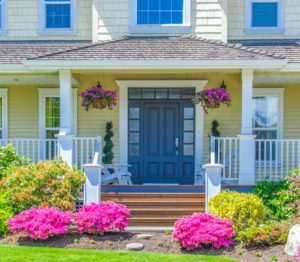Choose the Perfect Neighborhood
 If you’re in the market for a new home, part of choosing the perfect house is finding the right neighborhood. How do you do that? Start by asking yourself the right questions.
If you’re in the market for a new home, part of choosing the perfect house is finding the right neighborhood. How do you do that? Start by asking yourself the right questions.
What are you looking for?
Any home search should start with a list of needs and wants – and that goes for the neighborhood, too. Begin by establishing your priorities. Do you want to live close to amenities, like markets or gas stations? Do you want to have easy access to culture and nightlife? Is access to public transportation a necessity? Would you like to live in a community with other families who have small children, or maybe you’d like to be surrounded by other retirees? Be clear about what you need and what you’re willing to compromise on before you even begin your search.
How convenient is the neighborhood?
Once you’ve established your priorities and begin to look at potential homes, consider how convenient the neighborhood is for your life. Is the home close to your work, or will you have a long commute? If you need to run some quick errands, are there stores nearby? How far will your kids need to travel to get to school? Is the home located near family, or will visiting require a special trip?
How good are the local schools?
If you have school age children or are thinking about starting a family, obviously the quality of schools in the neighborhood is a major consideration. But schools don’t just affect those with kids. Homes in neighborhoods with good schools tend to have more value and hold on to their value for longer periods of time.
What are the additional expenses associated with this neighborhood?
Don’t just focus on the cost of the home when you’re thinking about buying, you also need to consider any other expenses or fees that may be associated with that community. Is the house in a development with a homeowner’s association? What are the property taxes on the home going to be? Are there any future developments planned for this community that could conceivably raise taxes in your area?
How safe is the neighborhood?
Safety is a big priority for many homeowners, so it’s a good idea to check into crime rates for a potential neighborhood and see how they compare to the national average. Also consider the types of crimes most common in the area. If you have specific questions about a neighborhood, call the local police station for more information.
Are there any warning signs?
At first glance a neighborhood may seem like a great choice. But take a closer look. Are there a large number of homes for sale? Are there any foreclosed properties in the area? Have many of the homes turned into rentals? Are there any sounds that could become unpleasant, like traffic noise, loud music or airports? Do you notice any unusual smells that could affect your quality of life? Visit the property at different times of day. Is traffic a nightmare during rush hour? Is the street particularly dark at night?
Considering the type of neighborhood you’d like to live in is just as important as choosing your house. Take time to prioritize your needs, and do the necessary work to investigate potential neighborhoods to find out as much about them as possible before putting in an offer.
Compliments of Virtual Results




 You’ve cleared out all the clutter, emptied the closets, trimmed the trees, and made all the necessary repairs. Your house is clean and spotless and ready to show to potential buyers.
You’ve cleared out all the clutter, emptied the closets, trimmed the trees, and made all the necessary repairs. Your house is clean and spotless and ready to show to potential buyers.
 Is your family soon growing from two to three – or even four? Then it’s time to start thinking about how you’re going to make room for the newest addition to your tribe. If you aren’t sure how to find space for a baby in your home, here are some ideas to get you started.
Is your family soon growing from two to three – or even four? Then it’s time to start thinking about how you’re going to make room for the newest addition to your tribe. If you aren’t sure how to find space for a baby in your home, here are some ideas to get you started. Is it time to take the big leap and move in to a new home with your partner? No doubt you’re excited about this milestone in your relationship. You’ll now have someone to share the ins and outs of your day-to-day life.
Is it time to take the big leap and move in to a new home with your partner? No doubt you’re excited about this milestone in your relationship. You’ll now have someone to share the ins and outs of your day-to-day life.


 If buying a home is in your future, one of the realities you’ll need to face is the need to save for a down payment. Depending on the type of mortgage you qualify for, you’ll need anywhere from three to upwards of 20 percent of the purchase price in order to close. While that may seem like a lot of money to come up with in one lump sum, it can be done with some forethought, planning and discipline.
If buying a home is in your future, one of the realities you’ll need to face is the need to save for a down payment. Depending on the type of mortgage you qualify for, you’ll need anywhere from three to upwards of 20 percent of the purchase price in order to close. While that may seem like a lot of money to come up with in one lump sum, it can be done with some forethought, planning and discipline.


 Catch Our Feed
Catch Our Feed Subscribe via Email
Subscribe via Email Follow Our Tweets
Follow Our Tweets Friend Us On Facebook
Friend Us On Facebook Watch Us On Youtube
Watch Us On Youtube